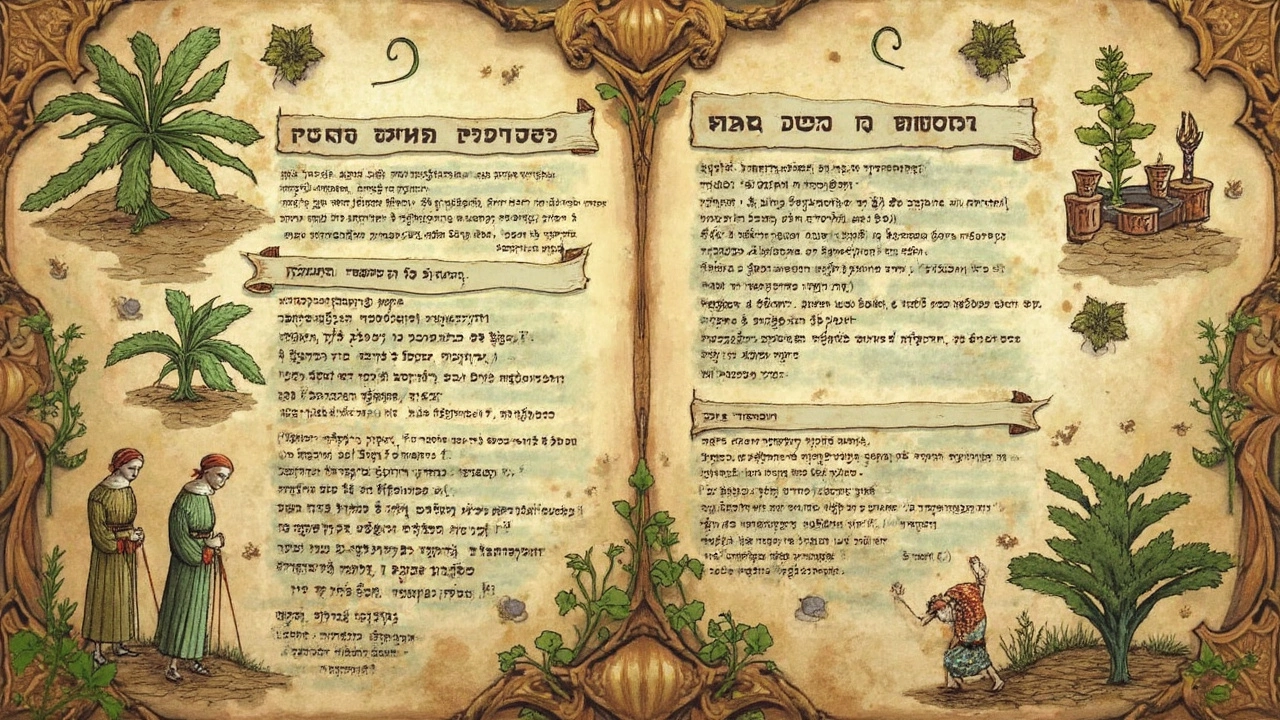
You probably don't think of herbs when flipping through the Bible, but mint actually makes a brief cameo! It's mentioned a couple of times, shedding light on how this fresh herb wasn't just for culinary use even back then. Mint, along with other herbs, was part of the cultural and religious practices of the time.
So here's the deal: mint pops up in the New Testament alongside other herbs like anise and cumin. It was mostly in the context of tithing when people paid one-tenth of their produce, including herbs. It highlights the importance of even everyday plants in spiritual and economic life back in the day.
But why does this matter now? Well, understanding how our ancestors viewed and used herbs can give us a fresh perspective on their practical benefits and symbolic meanings. Mint isn't just a garnish for your cocktail; it has deep roots in history, including its place in religious texts.
- Mint in Biblical Times
- Symbolism and References
- Historical Uses of Mint
- Modern Applications and Lessons
Mint in Biblical Times
When you think of the Bible, plants like mint might not be the first thing that pops into your head. But back in biblical times, herbs like mint had practical and religious significance. They weren't just used for cooking or freshening the air but played a role in everyday life and religious customs.
The Bible specifically mentions mint in the New Testament, in the Gospel of Matthew (23:23) and Luke (11:42). In both cases, Jesus talks about the Pharisees’ habit of tithing herbs such as mint, anise, and cumin. This practice meant giving a tenth of their produce to the temple. It shows that even humble plants had value and a place in religious offerings. Still, Jesus criticized them for focusing on tiny rituals while neglecting more significant spiritual duties like justice, mercy, and faith.
Back then, mint was more than just a garnish; it represented devotion and religious observance. You could say it was like the parsley on your seder plate—important, but not the main event.
Mint was commonly grown around the Mediterranean basin, which made it accessible for people living in those regions. The use of herbal supplements like mint ties into a broader tradition of using natural plants for health and spiritual needs—a practice still relevant today.
In some ways, mint’s presence in biblical scripts highlights the ever-enduring relationship between nature and spirituality. It shows that ancient folks didn't just overlook the small things; they were aware of the little details and what they could represent.
So next time you’re sipping on mint tea, think about its historical journey. This little green leaf has been part of human routines for centuries, touching both mundane and sacred aspects of life.
Symbolism and References
Alright, so let's talk about what the Bible really says about mint. It isn't just tossed in there like an afterthought; there's a reason it gets a mention. In ancient times, people really valued their herbs, and mint was no exception. It was part of everyday life and held economic value.
In Matthew 23:23 and Luke 11:42, Jesus criticizes religious leaders for focusing too much on the minutiae of tithing herbs like mint while neglecting more important things like justice and love. Basically, they were missing the forest for the trees, focusing on tiny details rather than the big picture.
This reveals quite a bit about the cultural context of the time. Mint wasn't just growing in a random backyard; it was significant enough to be used in religious obligations. Mint, along with anise and cumin, illustrates how even the everyday could have spiritual significance.
Mint's inclusion suggests that people were pretty diligent about using it, possibly for flavoring food, medicinal purposes, or even as a form of currency. Its appearance in these texts highlights not just its functional role, but also its symbolic importance as a measure of devotion and obedience.
Plus, it gives us a hint about economic practices back in those biblical days. Imagine lugging around your herbs to pay your dues! The mention of mint in the context of tithing shows its value in a system where agriculture and trade dominated daily life.

Historical Uses of Mint
Back in the day, mint wasn't just sitting pretty in a mojito. It played a bigger role in both everyday life and special occasions. The fact that mint got a mention in the Bible alongside goods meant for tithing shows it held some significance. This significance was rooted in its varied practical uses and the meanings it conveyed.
The ancient Romans and Greeks were all about using mint for its scent. Picture this: a world without Febreze or scented candles. People used fresh mint leaves to freshen the air in homes, temples, and even on themselves. It was like their version of natural air freshener!
Mint also found its place in the culinary world. The Greeks used it to flavor meats and sauces, not too different from how we might use it now. But it wasn't all about taste. The herb was believed to aid digestion, which is why it often followed a heavy meal, offering a refreshing finish.
Medicinally, mint has been a go-to remedy for centuries. An ancient home remedy involved boiling mint leaves to make a tea that relieved stomach cramps, headaches, and even colds. It was viewed as a catch-all remedy, offering relief for various physical issues before the days of your local drugstore stocked with modern medicine.
- Romans were so into mint they’d even sprinkle it around banqueting tables to make guests feel merry.
- In medieval Europe, it was thought to purify water. Imagine worrying about clean water and just chucking in a few mint leaves!
Mint wasn't just used for its benefits; it was seen as a symbol, too. In some cultures, it was associated with hospitality and greeting friends and strangers alike.
So the next time you see mint on a menu or in your garden, know that it carries with it a history as rich as its flavor, from being more than a garnish to a symbol of good health and vibrant gatherings.
Modern Applications and Lessons
Mints like peppermint and spearmint aren't just for freshening your breath or adding a twist to drinks. Today, we've got a whole bunch of uses for this herb that would surprise even folks from biblical times.
For starters, mint is known for its digestive benefits. A peppermint tea after a meal can help ease bloating and gas. It's like magic but backed by science! The menthol in mint acts as a natural muscle relaxant, soothing the digestive tract.
Did you know mint is also great for the skin? Its anti-inflammatory properties help reduce redness and irritation. Many skincare products have mint extracts to keep your skin cool and refreshed. And if headaches are getting you down, a bit of peppermint oil on your temples can help knock it out.
"The health benefits of mint, including improved digestion, mental clarity, and headache relief, underscore why it remains a staple herbal remedy." — Dr. Emily Huang, Herbal Expert
Looking to grow your own mint? It's super easy. This herb can be grown in small pots or gardens. Just make sure it gets plenty of water and sunlight. Beware, though: mint can spread like wildfire, so keep it contained unless you want it taking over your garden.
Even outside of health, mint has a role. Chefs love using mint to add flavor to dishes, from salads to desserts. It's a versatile herb that, while rooted in ancient practice, still makes waves in modern kitchens.
Take a look at these interesting facts about mint usage:
- Enhances brain function and memory, thanks to its invigorating scent.
- Packed with vitamins A and C, important for your immune system.
- Used in aromatherapy to boost mood and enhance focus.
In a world where natural remedies are making a comeback, herbs like mint shine bright. Whether for health, beauty, or taste, it's clear that mint's application today is as valuable as it was in the days of the Bible.





Rohan Talvani
I am a manufacturing expert with over 15 years of experience in streamlining production processes and enhancing operational efficiency. My work often takes me into the technical nitty-gritty of production, but I have a keen interest in writing about medicine in India—an intersection of tradition and modern practices that captivates me. I strive to incorporate innovative approaches in everything I do, whether in my professional role or as an author. My passion for writing about health topics stems from a strong belief in knowledge sharing and its potential to bring about positive changes.
view all postsWrite a comment